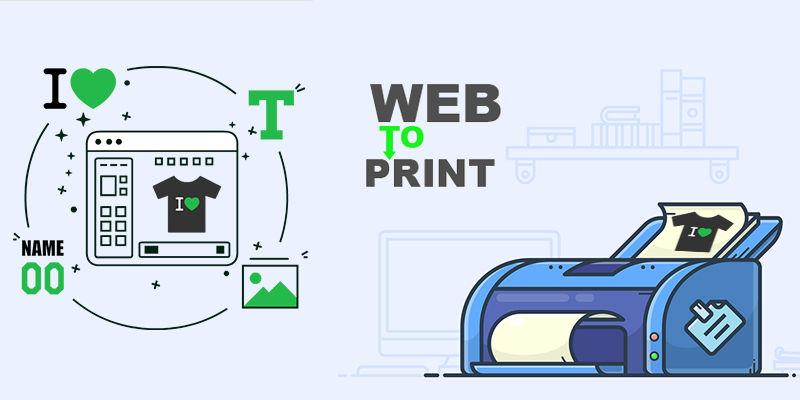Improving Print Standards with Cutting-edge Web-to-Print Technologies

the ever-changing digital world of today, print businesses are seeking innovative solutions to enhance their operations and meet the growing requirements of their customers. Pioneering this shift is web-to-print software, that is revolutionizing the way print shops manage their print orders and customer interactions. This innovation not only streamlines the ordering process but also allows for extraordinary levels of customization as well as personalization, ensuring that clients obtain exactly what they envision.
As we delve deeper into the world of web-to-print tools, we will examine how these solutions are transforming the print industry. From improved hop over to this web-site and workflow efficiency to better customer experiences, the benefits are significant. We will also evaluate web-to-print software with traditional printing methods, helping you understand the fundamental differences as well as advantages. Whether you're a small print shop that wants to scale and a large company requiring robust printing solutions, grasping these tools can have a major effect on your success in the highly competitive print market.

Comprehending Web-to-Print Solutions
Web-to-print software is a powerful instrument that empowers organizations to provide online print services straight to their customers. This technology allows users to personalize printing products through an online system, providing a seamless fusion of e-commerce and print solutions. By leveraging online printing solutions, print providers can optimize their operations, manage orders more efficiently, and improve client interaction through personalized solutions. This revolution is redefining the traditional printing paradigm, shifting the focus from face-to-face engagements to online platforms.
One of the core advantages of web-to-print solutions is its ability to streamline various stages of the printing workflow. From order processing to completion, these services considerably lower manual errors and waiting times, resulting in increased output. In addition to streamlining workflows, web-to-print solutions also supports live collaboration between users and printing companies, allowing for a more dynamic and satisfying encounter. This engagement assists foster client loyalty and promotes recurring orders.
Furthermore, as the e-commerce sector continues to change, the demand for web-to-print solutions is on the upswing. Companies that embrace this system can provide a broader variety of products while providing customers with the ability to tailor their requests simply. This not only caters to the growing trend of customization but also ensures that printing companies stay competitive in an ever-changing industry. By comprehending the basics of web-to-print solutions, businesses can make informed choices about incorporating these tools into their operations.
The Effect of Digital Print Systems on the Print Industry
Digital print technologies are fundamentally changing the printing sector by streamlining how businesses manage their print needs. Historically, print orders were often cumbersome, requiring significant communication between customers and print shops. With the introduction of web-to-print software, users can now easily submit orders over the internet, tailor products in real time, and access a selection of pre-designed layouts and design resources. This shift not only enhances the user experience but also decreases turnaround times, enabling the print industry to process orders more swiftly.
Moreover, online print solutions is fostering greater personalization within the print sector. Businesses can offer variable data printing, allowing customers to modify their orders down to singular elements, such as names or images. This ability corresponds with modern market preferences that support customized marketing materials and offerings, boosting customer involvement and satisfaction. As a result, the print industry that adopt these digital solutions can differentiate in an ever more competitive landscape, responding to varied client needs while growing their service selections.
Ultimately, online print technology is playing a crucial part in promoting sustainability within the print business. By minimizing waste through efficient order processing and enabling on-demand printing, businesses can lower their carbon footprint. The adoption of cloud technologies further enhances sustainability initiatives as they often come with features that optimize logistics and resource distribution. As the print industry adopt online print solutions, they are not only enhancing operational effectiveness but also adding to a greener future in the printing sector.
Selecting and Deploying the Suitable Web-to-Print System
Choosing the suitable web-to-print platform necessitates meticulous consideration of your business needs and goals. Begin by reviewing the exact requirements of your print shop, for example the types of products you offer, the amount of printing requests, and your customer base. Evaluate various software choices based on key characteristics like customization capabilities, intuitive designs, and compatibility with existing processes. It is crucial to pick a platform that not only meets your existing demands but is also scalable for future development.
Once you’ve found a suitable web-to-print solution, the integration process is essential for ensuring effective adoption. Begin by drafting a detailed plan that describes the steps for adopting the new system into your workflows. Involve your staff in the transition to make sure they are proficient with the latest tools and processes. Training is essential; think about offering thorough sessions to enable your employees understand how to use the platform properly, maximizing its potential to improve operations.
In conclusion, consistently monitor and evaluate the effectiveness of the web-to-print system post-implementation. Gather input from both clients and team members to determine any areas for enhancement. Regular updates and modifications may be needed to adapt the system with evolving operational requirements or market trends. By dedicating to regular evaluation and refinement, you can enhance your web-to-print system for the most favorable success, resulting in increased effectiveness and client contentment.
